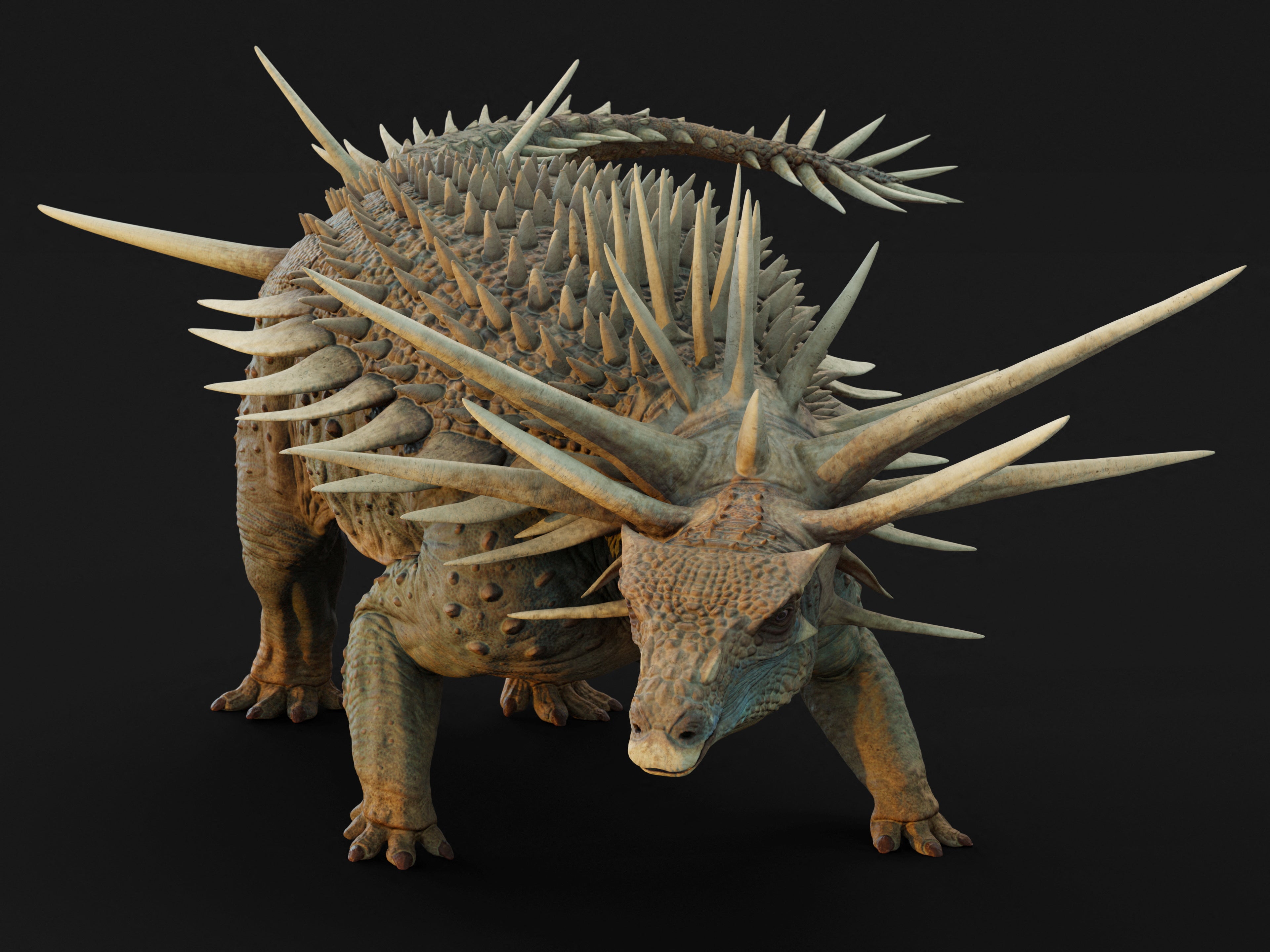A dinosaur unlike any other, adorned with an extraordinary array of armour and spikes – some reaching a metre in length – roamed a coastal floodplain in what is now Morocco approximately 165 million years ago.
Named Spicomellus, this unique creature has been identified from extensive fossilised remains discovered in the Atlas Mountains near Boulemane.
Described by researchers this week, Spicomellus was roughly four metres long and weighed an estimated one to two tonnes. It represents the oldest-known member of the ankylosaur group – tank-like, squat, four-legged plant-eaters.
“The armour of Spicomellus is jaw-droppingly weird, unlike that of any other dinosaur – or any other animal alive or dead – that we’ve ever discovered,” stated vertebrate palaeontologist Richard Butler of the University of Birmingham, co-leader of the research published in the journal Nature.
He added: “Not only did it have a series of sharp, long spikes on each of its ribs – unknown elsewhere among animals – but it had spines the length of golf clubs sticking out in a collar around its neck.”
This extravagant armour is believed to have served a dual purpose: defence against large meat-eating dinosaurs and a display to attract mates.
“The armor surely had some defensive function, but it’s difficult to imagine how the meter-long spikes around the neck were used for defense. They seem like enormous overkill,” Butler said.

In living animals, structures that tend to have no obvious function and look like they might be a bit annoying to carry about – like a deer’s antlers or a peacock’s tail – are usually associated with sex, according to vertebrate paleontologist and study lead author Susannah Maidment of the Natural History Museum in London.
“They could be used in courtship or territorial displays, or to fight against members of the same species during competitions for mates. Spicomellus’ armor is totally impractical and would have been a bit annoying in dense vegetation, for example.
“So we think that it is possible the animal evolved such elaborate armor for some sort of display, perhaps to do with mating,” Maidment added.
While the fossils did not represent a complete skeleton – the head was among the missing parts – the partial remains provided a good understanding of Spicomellus. This dinosaur was previously known only from a single rib fragment described in 2021 before these fossils were found in 2022 and 2023.
Its back was covered in short spikes, owing to ribs with spikes on their top surfaces. It had a bony collar with plates and two pairs of spikes projecting outward above the neck, including one 2.85 feet (87 cm) long that probably was even lengthier when the animal was alive.
It also had a pelvic shield and two large outward-projecting spikes above its hips.
Distinctive fused tail vertebrae suggested that Spicomellus possessed a weapon at the end of its tail to fight off predators – perhaps a club or spikes of some sort – though one was not recovered among the remains.

Such fused tail vertebrae have been found previously only in ankylosaurs with tail weapons. This would indicate that tail weapons appeared in ankylosaurs about 30 million years earlier than previously known.
Ankylosaurs were among the most successful herbivorous dinosaurs. They are closely related to another group of plant-eaters called stegosaurs that boasted bony plates on the back and a spiky tail weapon.
Both groups arose during the Jurassic. But the ankylosaurs outlasted the stegosaurs, thriving until an asteroid struck Earth 66 million years ago at the end of the Cretaceous Period, ending the age of dinosaurs.
The best-known member of the group, Ankylosaurus, was larger than Spicomellus, at roughly 26 feet (8 meters) long, and inhabited western North America during the twilight of the dinosaurs. Its armor, including a formidable tail club, protected against predators including Tyrannosaurus.
Early members of dinosaur groups often have fairly plain body plans compared to their later counterparts. Spicomellus shows that this was not the case with ankylosaurs.
“The armor of Spicomellus is much more elaborate than that of later ankylosaurs, and no later ankylosaurs have spiky ribs.
“What is surprising to us is that the most elaborate ankylosaur armor of all time is present in the oldest member of the group.
“Perhaps the simpler armor in later species reflects a shift towards the armor having a primarily defensive function due to increased predation pressure in the Cretaceous,” when predators grew exceptionally large, Butler said.


